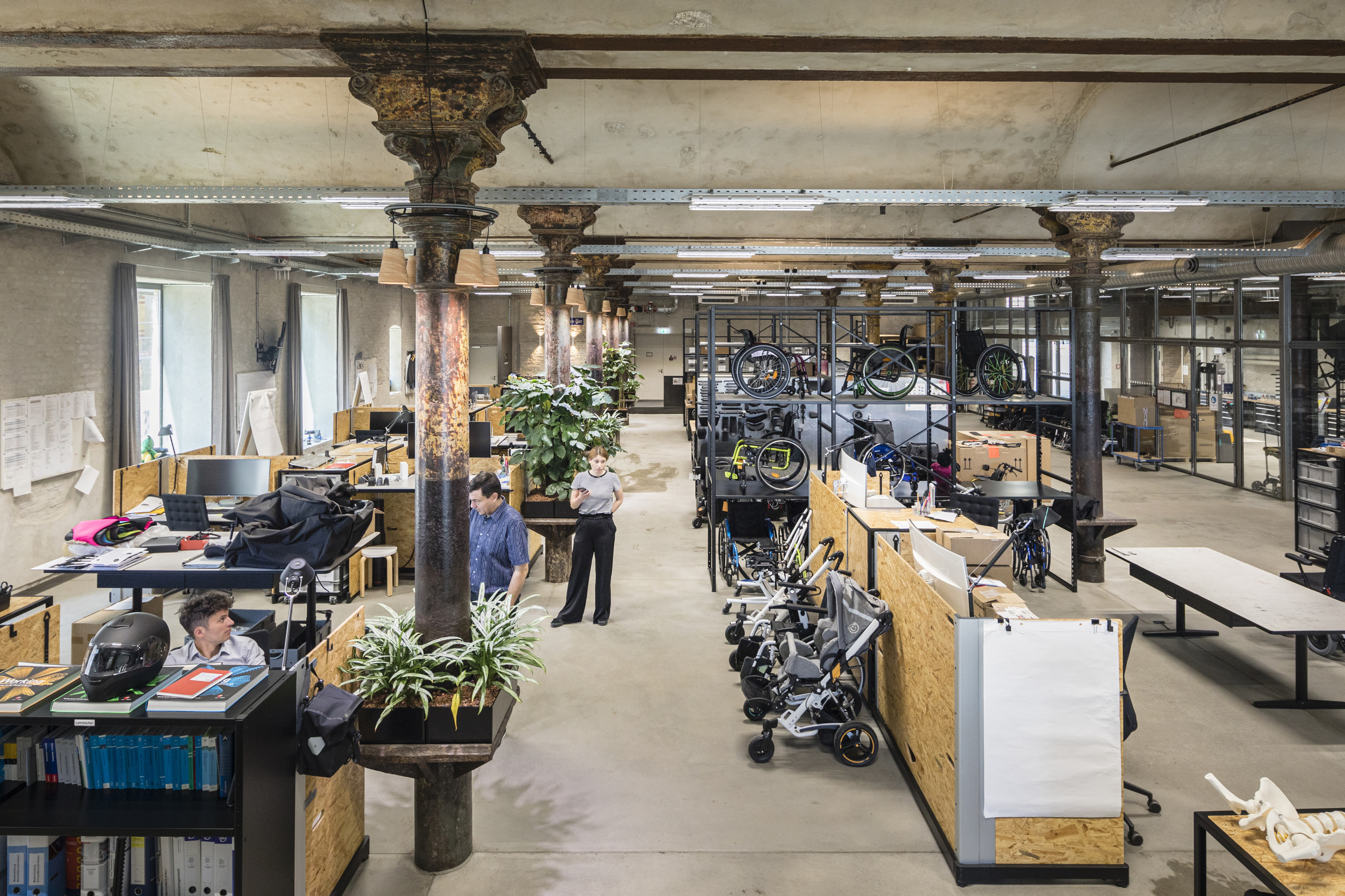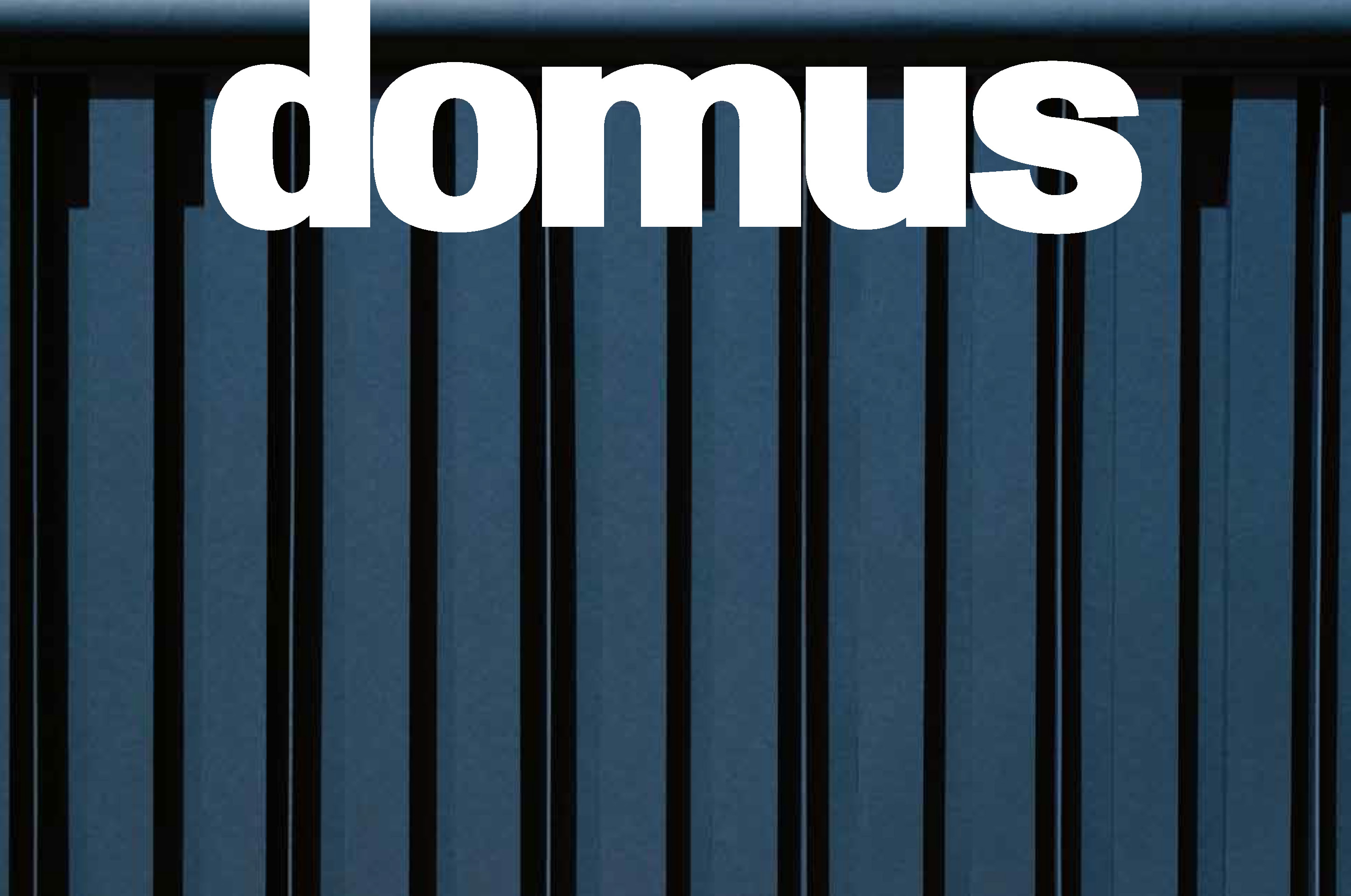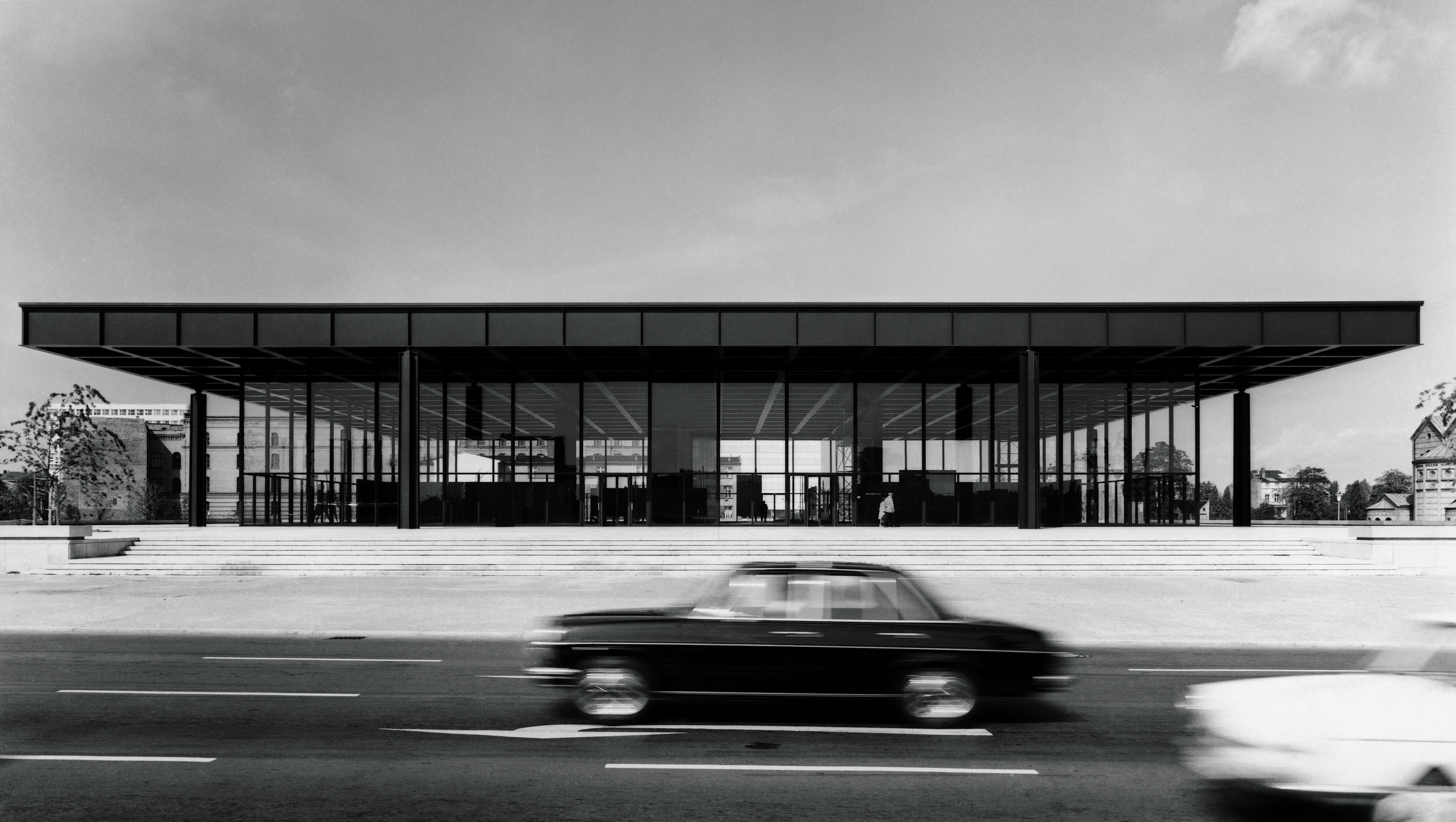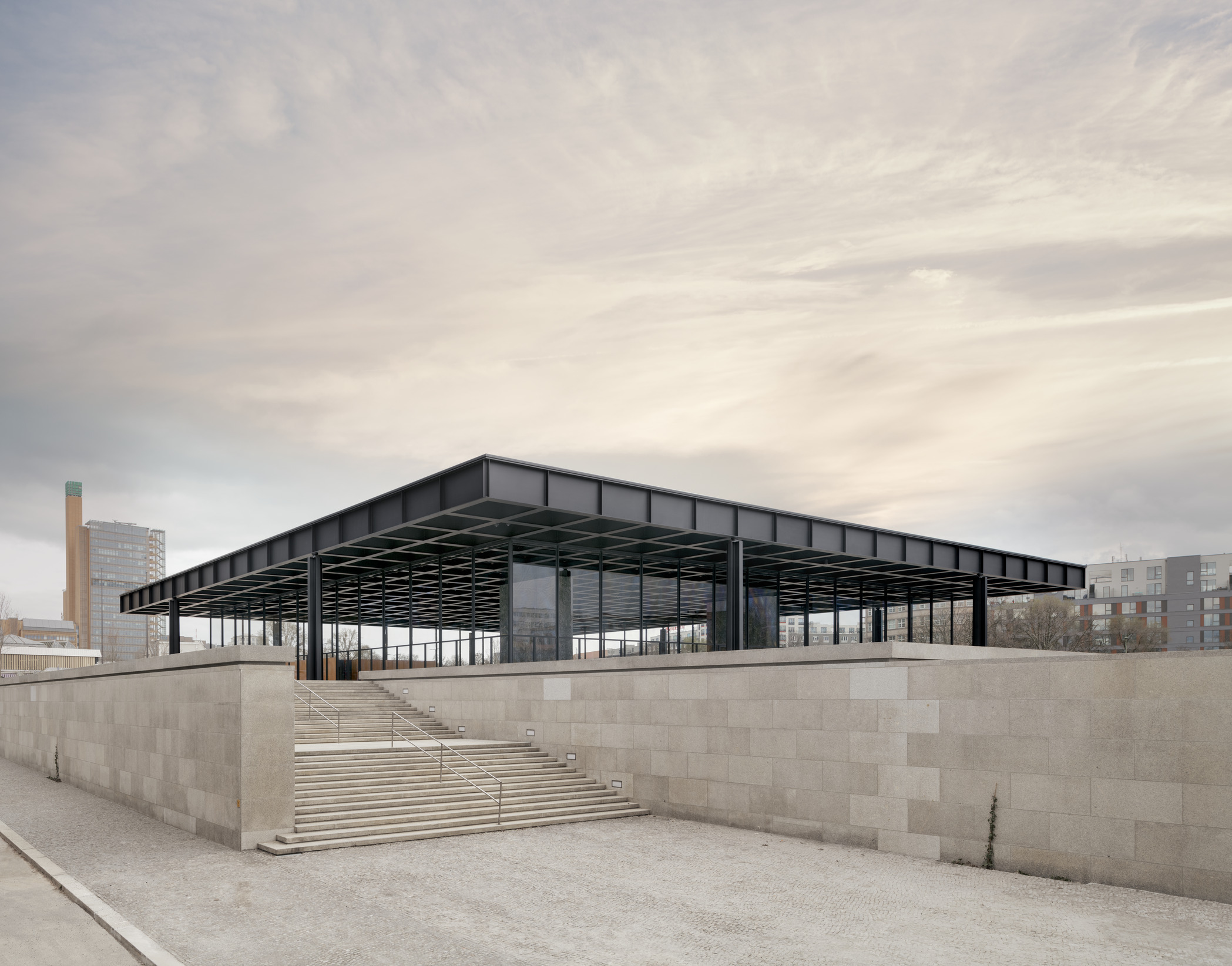The practice has performed a masterful warts-and-all retrofit of the former brewery, led by the clientâs desire to âkeep the DNAâ of the building, writes Rob Wilson.
âSome people have actually said: âSo when are you starting the renovation?"â says Thomas Benk, an associate at David Chipperfield Architects (DCA) in Berlin. We are standing outside the main entrance of what was the Bötzow Brewery, five minutes by tram from Alexanderplatz. The phased retrofit of the historic complex of seven buildings â built between 1864 and 1927 â has just been completed by the practice. Itâs the first stage in the realisation of a masterplan DCA drew up for the larger site in 2013. Once complete, it will see the addition of four new pavilion-like buildings, connected at basement level, strung out along its south-eastern flank.
The façades of the historic brewery buildings â yellow brick with red brick dressings â are surprisingly elaborate, detailed in a municipal-Italianate style reminiscent of old water board buildings in the UK. The exteriors remain pockmarked, pollution-flecked and worn in places. Many of the old window frames are clearly retained, and thereâs original, slightly discoloured glass in the early-20th century glazed awnings, which in turn have late-20th century additions â meaty double fluorescent strip light fittings â suspended below. Benk catches me looking at the lamps: âYes, those are the original GDR lamps,â he confirms, a reminder that this was once part of East Berlin, capital of the German Democratic Republic. âWe found a firm that could upgrade and retrofit them as LEDs, which was cheaper than replacing them: there are over 100 in the building. People who grew up in the GDR become very nostalgic on seeing them!â
The light fittings exemplify DCAâs approach to this project, one that Benk describes as âless a refurbishment, more a repairâ. Itâs an approach found elsewhere in DCAâs work â at the Neues Museum project, on which Benk also worked, for example. âBut it also derives from the request from the client, Hans Georg NĂ€der, CEO of healthcare company Ottobock, to âkeep the DNA of the buildingâ. So our intention has been to keep the layers of time, to show the impact of function and use and the story the building tells.â
Ottobock, a leading manufacture of prosthetic limbs, was founded in the city in 1919, uncoincidentally after the bloodbath of the First World War (the Berlin of maimed soldiers depicted by George Grosz comes to mind). The company re-established itself in West Germany after the Second World War, then just over 10 years ago decided to move its HQ and research facilities back to Berlin after 75 years.
This wasnât for sentimental reasons: âNĂ€der knew that a Berlin base was more likely to attract young talent to the firm,â says Benk. Indeed one feels that their choice of the brewery site and directive to âkeep its DNAâ played into this thinking. Itâs exactly this âpoor but sexyâ image (as Berlin Mayor Klaus Wowereit famously put it) that has made the city attractive to 20-somethings, even if the reality these days is rather more polished.
The Bötzow Brewery site on the north-east flank of the city centre, where it drew on springs from a high water-table beneath, was typical for 19th century Berlin. âThey werenât allowed to brew inside the old city boundary, so Berlin was practically circled by breweries,â says Benk. Indeed, as you walk west from the site, you hit the remains first of the Königstadt and then the Pfefferberg breweries, both long-repurposed, part of the latter housing the Aedes architecture gallery. They are all built in the same striking red and yellow brick, their lofty industrial chimneys once jostling for the attention of thirsty Berliners, for whom they often catered directly with beer gardens on site. At Bötzow, a garden and beer hall for 5,000 people occupied its south-east corner. Directly to the north was an elaborate villa and garden belonging to the breweryâs owner. A whole ecosystem and range of uses from public to private was accommodated on site: from water source to beer production to consumption â to the visible fruits of the profits produced.
While the main brewery buildings survived two wars without major damage, the business did not thrive thereafter. During the GDR period, the villa and beer hall were demolished (perhaps considered too symbolic of bourgeois decadence), while the remaining buildings were used primarily for storage and survived pretty much intact. It was only around 1990 that the threat of demolition led to the complex being given a heritage listing, after which it remained largely empty, apart from a few underground parties in the 1990s. âIâve met a few people who remember some strange nights here,â recalls Benk. Elements of this varied history have been allowed to remain, from the giant ruined trellised arches of the villaâs garden to 90s graffiti. The practice got the Berlin Heritage Authority on board at an early stage with their âdo less, add lessâ approach, as Benk terms it. âWe had a meeting with them every two weeks, showing tests and mock-ups of proposed surfaces and materials,â he says. Accepting imperfection, he adds, was more difficult for many of the builders involved âbut they really got it by the endâ.
The work was completed in phases roughly following the chronology of the seven successive blocks that mark the breweryâs expansion over 65 years. The range of four 19th century buildings that Ottobock now occupies were finished first, while the mostly early 20th century blocks to their south-west, separated by a courtyard with its fine glass and cast iron canopy intact, have just been completed and are being let as commercial workspace.
The buildingsâ basic construction is pretty consistent throughout: load bearing brick envelopes surrounding cast-iron frames, supporting floors formed of shallow brick barrel vaults. Only decorative flourishes, such as the Ionic capitals of the cast-iron columns, were omitted in the later blocks.
The brick envelope, like much of the building fabric, has been subjected to what Benk describes as âsoft cleaningâ, removing grime but not surface patina. Thermal improvements have been directed primarily at the roofs and windows. The former have been replaced with a new super-insulated sandwich, lined with timber soffits as before. Many of the windows were still the original âbox-windowâ casements â a precursor to double-glazing: double-layered, if single-glazed. Benk says: âThese still work pretty effectively and they were made of really high-quality, kiln-dried timber, which you just canât get now. So we persuaded the client that the windows should not be replaced, just repaired, as this was by far the cheapest option. Weâve just added a second layer of glazing where it was missing.â In addition, a small heating element had been embedded around the inner window frame as a fall-back on very cold days. As Benk points out, what was most sustainable ecologically in âdo less, add lessâ terms â including the keeping of whole floors of GDR-era concrete tiles â has also proved the most economical option, too â a powerful argument to put before any client.
Inside, the installation of a sprinkler system has dispensed with the need to line or box anything out, in particular the finely-shaped cast-iron columns. This exposure of the load-bearing structure lends a real sense of integrity to the spaces. The approach has also allowed the full gamut of original surface textures and patinas to be left exposed, vivid in their âstory-tellingâ through traces of redecoration and remains of old fixings and fittings. Again, only âsoft cleaningâ was implemented â just anything loose removed, necessary repairs done and replastering with a lime-based plaster, a lime-wash marrying it all together. In places, Benk says, they took a cue from previous GDR repairs, not always attempting to match and replace but to patch up â he points to a mortar infill where individual damaged glazed bricks had been repaired. âIf you try to replace too much, you run the danger of downgrading the old, compared with the new.â
The new pipes of the sprinkler system join the network of other pipes and services running along walls and ceilings: surface-mounted to minimise the need to cut into the fabric as well as offering ease of servicing. Elements include repurposed chunky old-school radiators running off the local steam-heating network (although whether this is powered by renewables or Russian gas is unclear).
Significant built interventions were limited to âthose needed to make the whole function and complyâ says Benk. Key determinants were accessibility and fire. New service cores, lift shafts and oiled-black steel stairs have been cut through and added where required, in particular connecting down into the vaulted double-basements, once mainly beer stores and now fitted out with fitness equipment. Concrete ramps connect the numerous smaller changes of floor level. Deeper floorplates have been cut through to allow natural light to percolate down from new skylights above, although some areas still look as though they will need artificial lighting, even on bright days. Service zone strips of WCs and kitchenettes have been added, faced in lime-washed gypsum boarding to distinguish them as flexible interventions.
Disappointingly, the success of what has been achieved in terms of reducing embodied carbon emissions through the âdo less, add lessâ approach cannot be fully assessed, as the figures are not yet available. Equally, this approach does not seem to have been such a driver in the new-build phase of the project. Underpinned by a massive new basement incorporating car parking, it will consist of four blocks with loadbearing structural concrete façades, though Benk says these have now been respecified to use recycled aggregate. This is now a legal requirement for all new public buildings in Berlin, but is not yet required for commercial developments such as this.
Of course, the DNA of any site is more than skin-deep and itâs these new-build elements that will drive the commercial and social sustainability of the site. Looking to revive the spirit of the brewery, the layout of the new blocks certainly promises formally and architecturally to offer a solution to reactivating the site. A new beer garden is planned (Ottobock has bought the rights to the Bötzow name), which, together with a possible food market, would give the site a public face again, while the blocksâ expressive arched façades will lend the whole a distinctive urban profile. The loadbearing façades will also maximise flexibility and change of use, with block 10 in particular, on the site of the old villa, designed to function either as office or residences.
For now, the mastery of texture and detail shown in the retrofit part is impressive. What appears at first sight as a light-touch aesthetic is indicative rather of an increasingly sophisticated and forensic approach to retrofit at the core of DCAâs practice.







